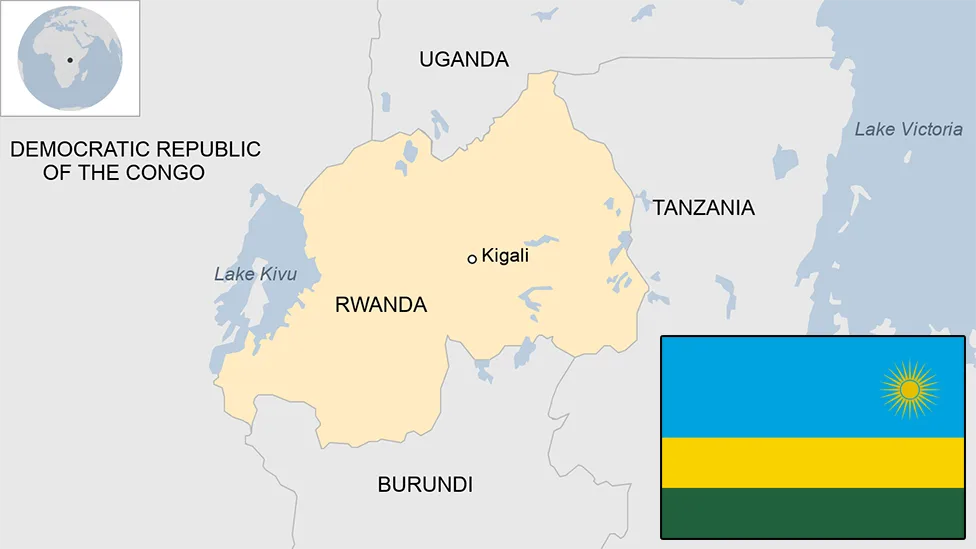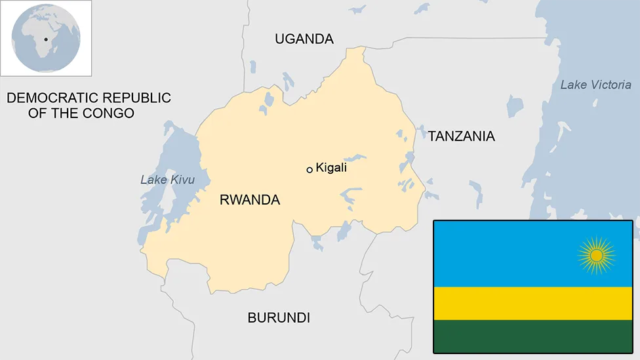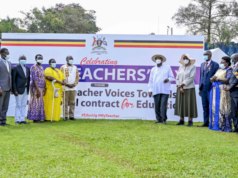
Rwanda, a small landlocked country in east-central Africa, is trying to recover from the ethnic strife that culminated in government-sponsored genocide in the mid-1990s.
An estimated 800,000 ethnic Tutsis and moderate Hutus were killed by dominant Hutu forces in 100 days.
Rwanda has striven to rebuild its economy, with coffee and tea production among its main exports, and economic development has helped reduce poverty and inequality.
Paul Kagame became president in 2000 and has effectively run Rwanda since 1994. While his government has maintained stability and economic growth, the US-based NGO Freedom House says it has also suppressed political dissent through intimidation, torture and suspected assassinations of exiled dissidents.
REPUBLIC OF RWANDA: FACTS
- Capital: Kigali
- Area: 26,338 sq km
- Population: 13.8 million
- Languages: Kinyarwanda, French, English, Swahili
- Life expectancy: 64 years (men) 69 years (women)
LEADER
President: Paul Kagame

Paul Kagame has run Rwanda since his rebel army ended the slaughter of hundreds of thousands of people in 1994.
He was sworn in as vice-president and defence minister in the post-genocide government in July 1994, but was widely seen as the real power in Rwanda.
In 2000 parliament elected him president. He has won elections ever since, the last was in 2017 where official figures showed he won 99% of the vote, which many outside the country dismissed as a sham. He has said he will stand again in 2024.
To his admirers he is a visionary leader, but to his critics he is an authoritarian despot who tolerates no opposition.
MEDIA

State TV and radio reach the largest audiences and operate alongside privately-owned outlets.
Self-censorship is commonplace, says Reporters Without Borders. Exile journalists operate online, prompting website blocking, says Freedom House.
TIMELINE

Some key dates in the history of Rwanda:
700BC-1500AD – Bantu groups migrate into Rwanda, clearing forest land for agriculture. The original forest-dwellers, ancestor’s of today’s Twa, move to the mountainous areas.
15th-19th Centuries – Clans begin to merge into kingdoms. One of these, the Kingdom of Rwanda becomes increasingly dominant from the mid-18th Century, reaching its greatest extent under the reign of King Kigeli Rwabugiri in the 19th Century.
1890 – Rwanda becomes part of German East Africa, following the colonial partitioning of Africa in the 1884 Berlin Conference.
1914-1918 – World War One.
1916 – Belgian forces invade German-held Rwanda.
1922 – Belgium rules both Rwanda and Burundi as a League of Nations mandate called Ruanda-Urundi. Both the Germans and the Belgians promote Tutsi supremacy, considering the Hutu and Tutsi different races.
1959 – Tutsi King Kigeri V, together with tens of thousands of Tutsis, forced into exile in Uganda following Hutu-Tutsi violence.
1961 – Belgium – now pro-Hutu – holds a referendum in which Rwanda votes to abolish the monarchy.
1962 – Rwanda separates from Burundi and gains independence.
1963 – About 20,000 Tutsis are killed following an incursion by Tutsi rebels based in Burundi. Fighting between the two ethnic groups continues intermittently over the next three decades.
1990-1994 – Rwandan civil war. The rebel Rwandan Patriotic Front (RPF) composed of nearly 500,000 Tutsi refugees, invades northern Rwanda from Uganda. The RPF condemns the Hutu-dominated government for failing to democratize.
1993 – Peace treaty signed.
1994 – Ceasefire ends when Rwandan President Juvenal Habyarimana and Burundi’s President Cyprien Ntaryamira are killed in a rocket attack on their aircraft. Most theories say the aircraft was shot down either by the RPF or government-aligned Hutu followers opposed to talks with the RPF.
Mr Habyarimana’s death triggers a 100-day orgy of violence, the Rwandan genocide, perpetrated mainly by Hutus against Tutsis and moderate Hutus. About 800,000 people are killed.
1996-2003 – Rwanda’s invasion of DR Congo marks the beginning of its lengthy involvement in the neighbouring country’s two civil wars.
2003 – Voters back a draft constitution which bans the incitement of ethnic hatred. Paul Kagame wins the first presidential elections since the 1994 genocide.
2005 – Government begins the mass release of thousands who confessed to involvement in the 1994 genocide. Rwanda’s 12 provinces are replaced by a smaller number of regions with the aim of creating ethnically-diverse administrative areas.
2015 – The International Criminal Tribunal for Rwanda holds its last hearings, 10 years after opening, and having convicted 93 individuals in connection with the 1994 genocide.
2017 – President Kagame re-elected with 99% of the vote in polls denounced as unfair by independent observers.
2022 – DR Congo, UN, US and others accuse Rwanda of sending its soldiers to fight alongside M23 rebels in eastern DR Congo, who face accusations of carrying war crimes against civilians. Rwanda denies this.







